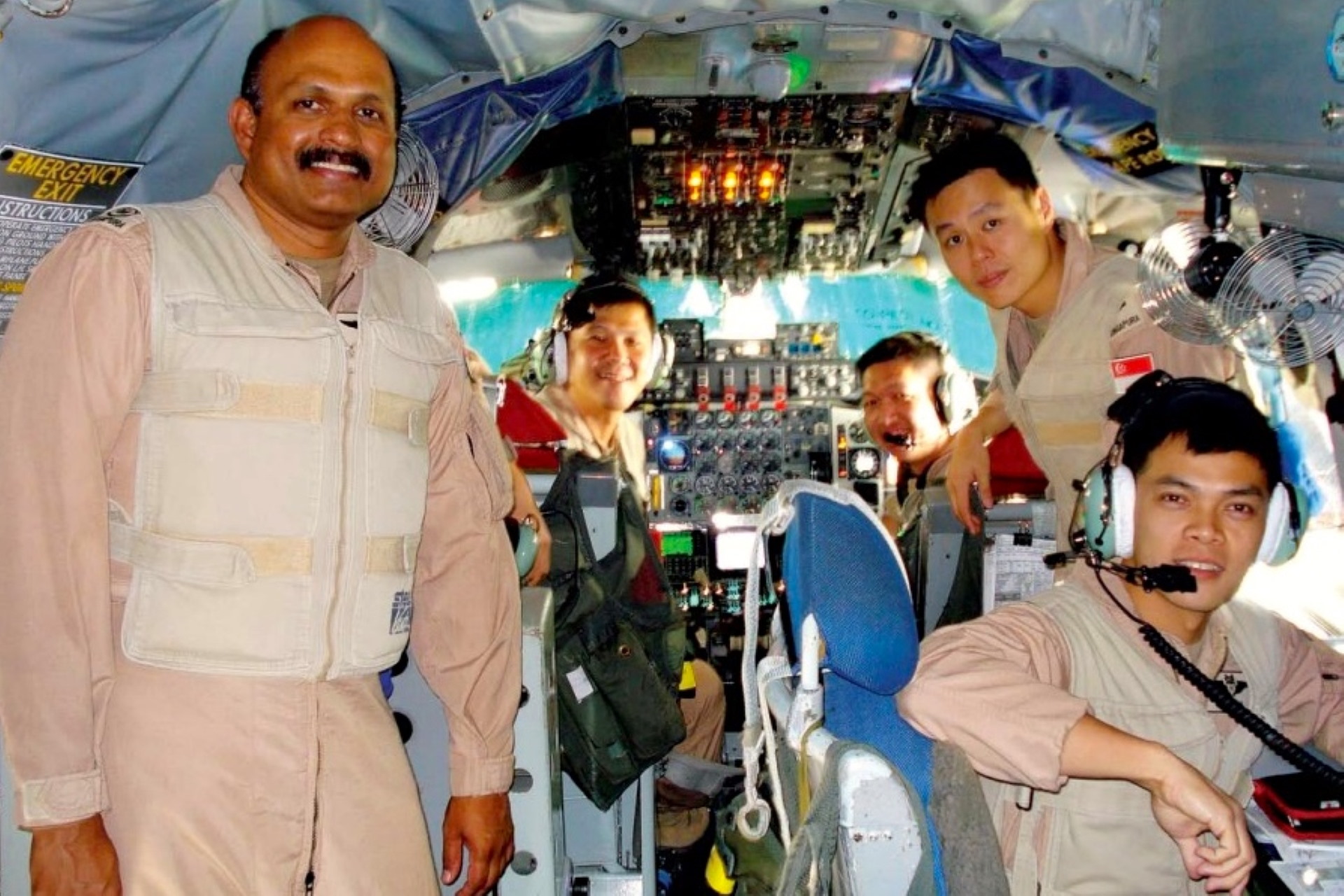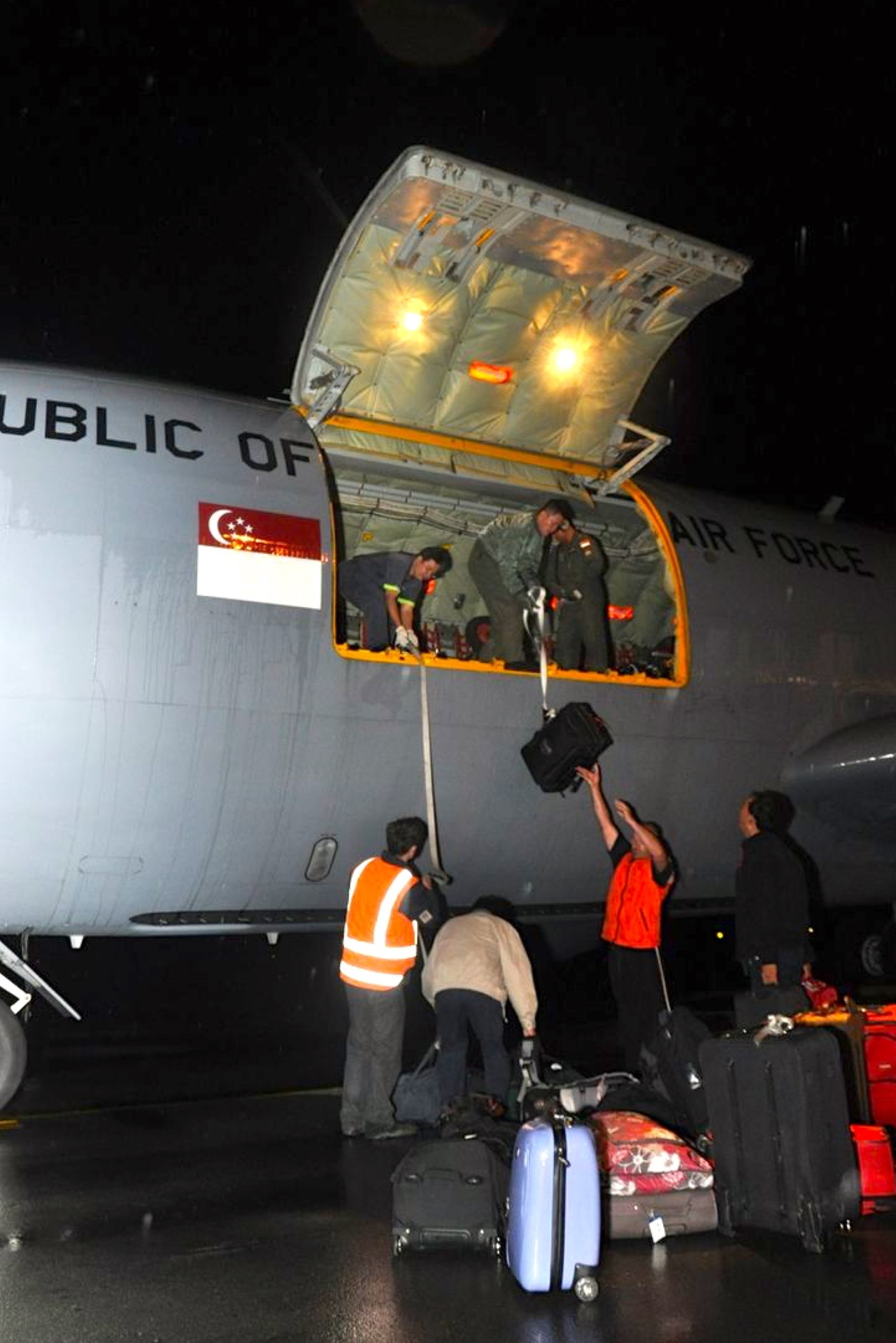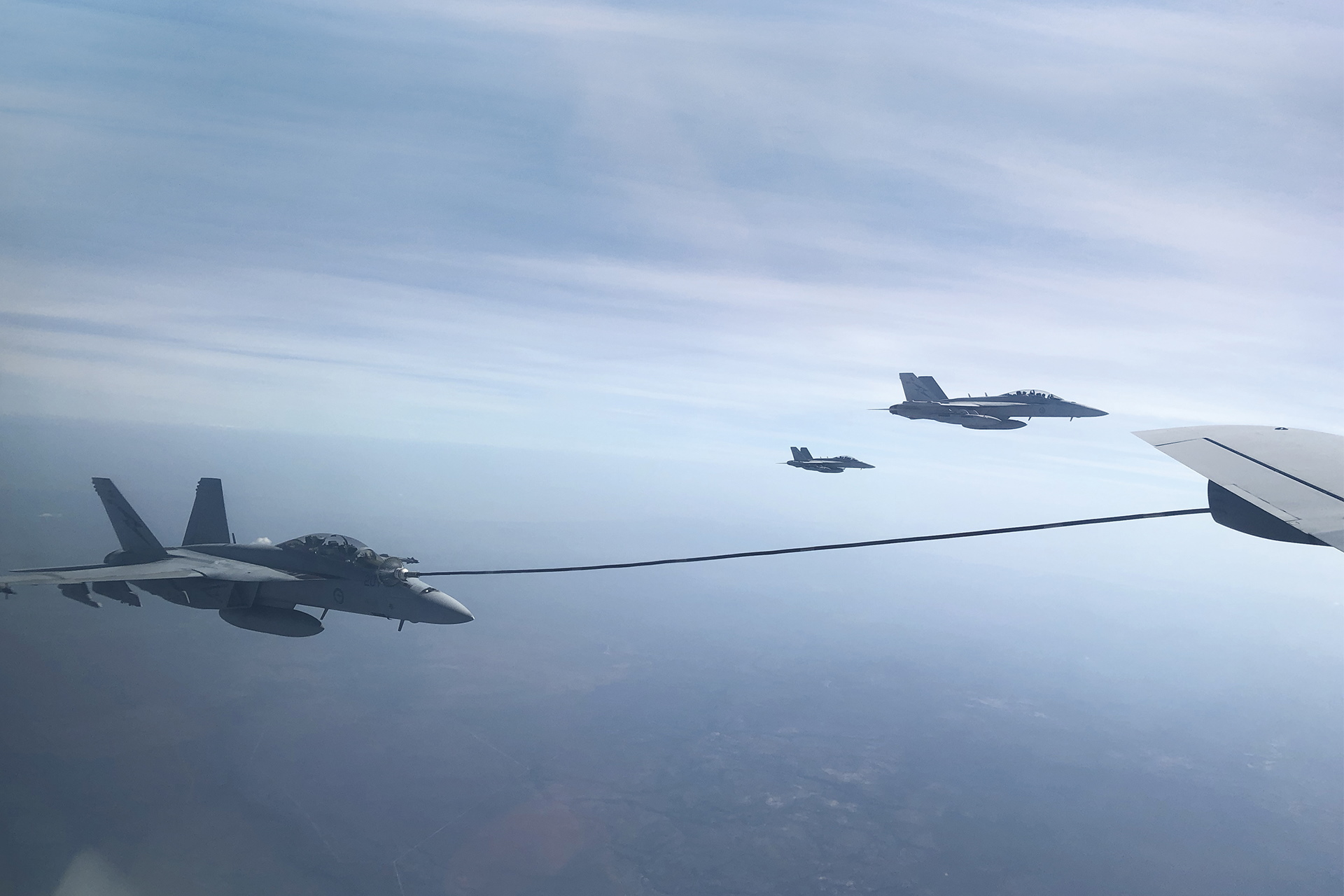OPS & TRAINING
FLYING FURTHER UNDER THEIR WINGS
11 Nov 2019
These majestic warbirds have served the Republic of Singapore Air Force (RSAF) well for over two decades. Now it’s time for the KC-135R long-range jet tankers to rest.


They give our fighter jets an extra boost to fly further and stay in the air longer, by providing Air-to-Air Refuelling (AAR). Since the KC-135R long-range jet tankers were acquired by the RSAF in Sep 1997, they have participated in countless high-profile operations and exercises.
These tankers are also able to perform aeromedical evacuation and airlift missions and have been deployed in humanitarian assistance and disaster relief (HADR) efforts such during the aftermath of the 2011 earthquake in Christchurch, New Zealand.
In June this year, the KC-135Rs flew their final flight. In their place will be Airbus A330 Multi-Role Tanker Transport (MRTT) aircraft that will take on the RSAF's AAR and airlift requirements.
"I'm heartened to see that the KC-135R has delivered such a capability to the RSAF and contributed so much to the achievements of the RSAF, as well as the people who have played a part continue to be committed to safeguarding the Singapore skies," said Lieutenant Colonel (LTC) Yeo Hwee Liang, the last Commanding Officer (CO) of 112 Squadron (SQN), which operates the KC-135R.
As the 22-year service of our KC-135Rs comes to a close, take a look at some of the missions they've been on, and how the aircraft and crew have left their mark on the people and places they've visited.

Rebuilding lives
In 2003, the Singapore Armed Forces (SAF) answered the United Nations Security Council's call to contribute in multinational efforts to rebuild Iraq and preserve security and stability in the Gulf region.
Codenamed "Operation Blue Orchid", the five-year mission saw the deployment of the KC-135R, and the C-130 transport aircraft. Joining them were Landing Ships Tank from the Republic of Singapore Navy, and a total of 998 SAF servicemen and women.
Recalling the time he spent there as an Air Crew Specialist (Boom Operator) Master Warrant Officer (MWO) (Ret) Bhonesveran said: "Most of the time, we knew who our receivers would be. But because this was an operation, we didn't always know who would be coming up to us (due to real-time changes).
"We just had to be well-prepared for all the different types of receiver aircraft," said the 55 year-old. He was also among the squadron's first batch of boom operators.



Bringing help to victims of natural disaster
When an earthquake hit the New Zealand city of Christchurch on 22 Feb 2011, the Singapore Armed Forces despatched a 116-man team and two C-130 military transport aircraft to assist the New Zealand Defence Force (NZDF) in airlifting humanitarian aid and supplies to victims of the disaster. A KC-135R was also deployed to evacuate the victims.
1st Warrant Officer (1WO) Ng Kok Wee, 40, was part of the team deployed to assist in the mission to bring aid to the victims of the earthquake and evacuate them to safety. "We were activated on short notice, taking off within nine hours of receiving the mission. During that time, the various agencies, including the Home Team, worked together to make the mission a success. We flew overnight from 3 a.m. straight to Christchurch. The thing about the KC-135R is that we have the reach and the speed, so we can fly further and faster to the destination."


Bringing our injured Singaporeans home
On 31 Oct 2000, harsh weather conditions caused Singapore Airlines flight SQ006 to crash during take-off at the Chiang Kai-shek Airport (now called Taiwan Taoyuan International Airport) in Taipei, Taiwan. The crew from 112 SQN, together with RSAF Medical Services flight surgeons and paramedics were activated to bring the Singaporean victims back on the KC-135R.
This was the KC-135R's first aeromedical evacuation mission. The team modified the aircraft, usually used for refuelling missions, to make it suitable for evacuating the casualties. For example, they suspended equipment like intravenous drips from the cabin roof using a looped line normally used by static-line parachutists.
Pioneer CO of 112 SQN LTC (Ret) Geoffrey Lui was one of the pilots on this mission. The 59-year-old recounted the mission: "We were given very short notice, less than 48 hours, to transform our KC into an air hospital for this aeromedical evacuation.
"Our aeromedical centre and pilots in the squadron had to equip the aircraft, fly it locally, and make sure the system was tested because we built four different stations on the aircraft which were manned by various surgeons and nurses from the hospitals."



In their 22 years in the RSAF, the KC-135R has also participated in numerous multilateral exercises, holding their own alongside militaries from around the world. These include Exercise Red Flag held in the United States (US), Exercise Pitch Black in Australia and Exercise Cope Tiger together with the US Air Force and Royal Thai Air Force.



ALSO READ IN OPS & TRAINING

Exercise Wallaby 2025: To see better, shoot faster
31 Oct 2025
The SAF focuses on complex strike missions and multi-domain integration in Exercise Wallaby 2025, the 35th edition of its largest unilateral overseas exercise.

Ex Wallaby 25 – Greater Integration and Complexity
25 Oct 2025
The 35th edition of the SAF’s largest unilateral overseas exercise is an opportunity for expanded scale and deeper integration towards an effective, networked fighting force.

Ex Forging Sabre ramps up use of unmanned assets in integrated strike operations
12 Sep 2025
In this 10th edition of Exercise Forging Sabre, the SAF sharpened its cutting edge for the dynamic modern battlefield, with expanded integration between manned and unmanned platforms.


